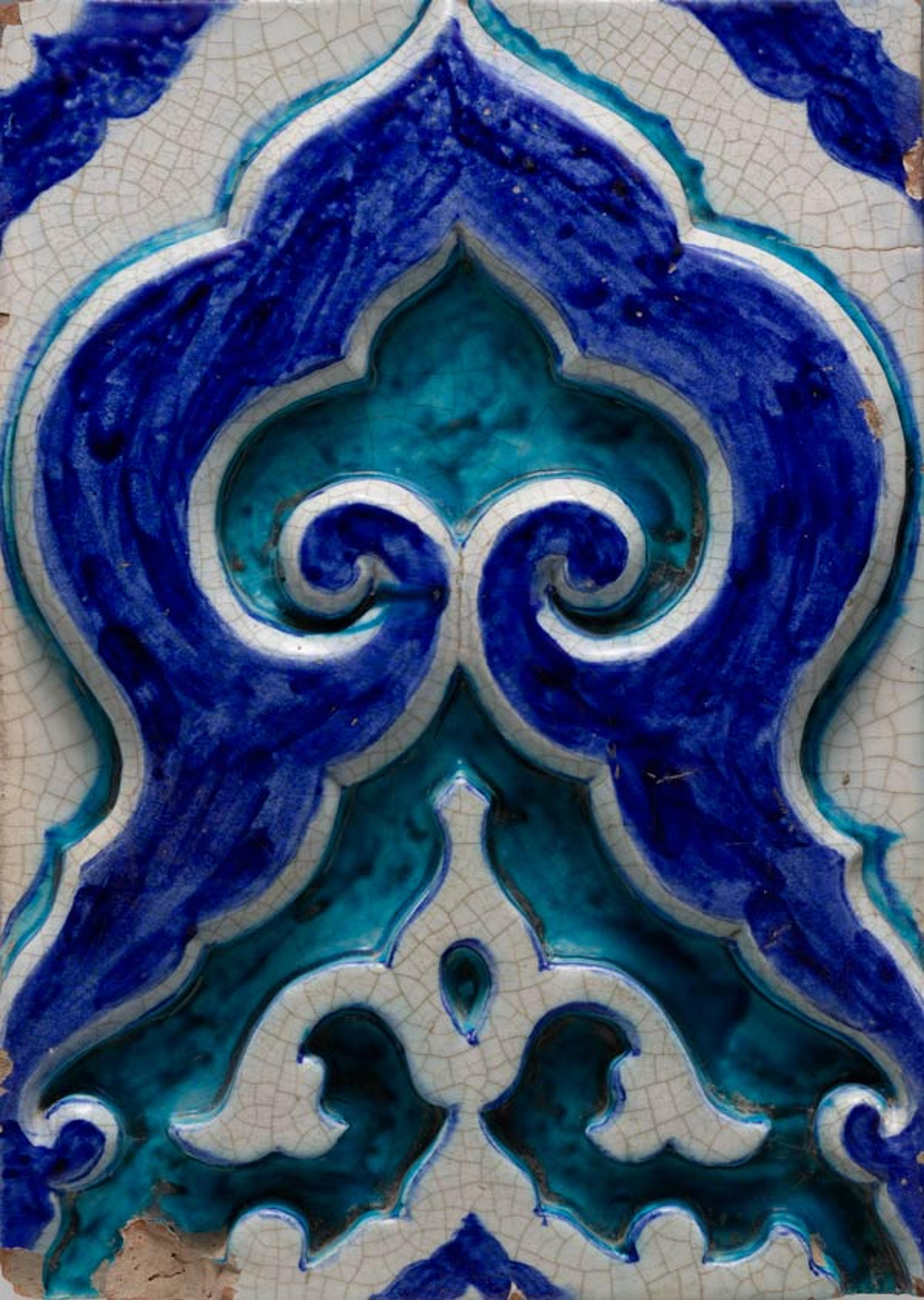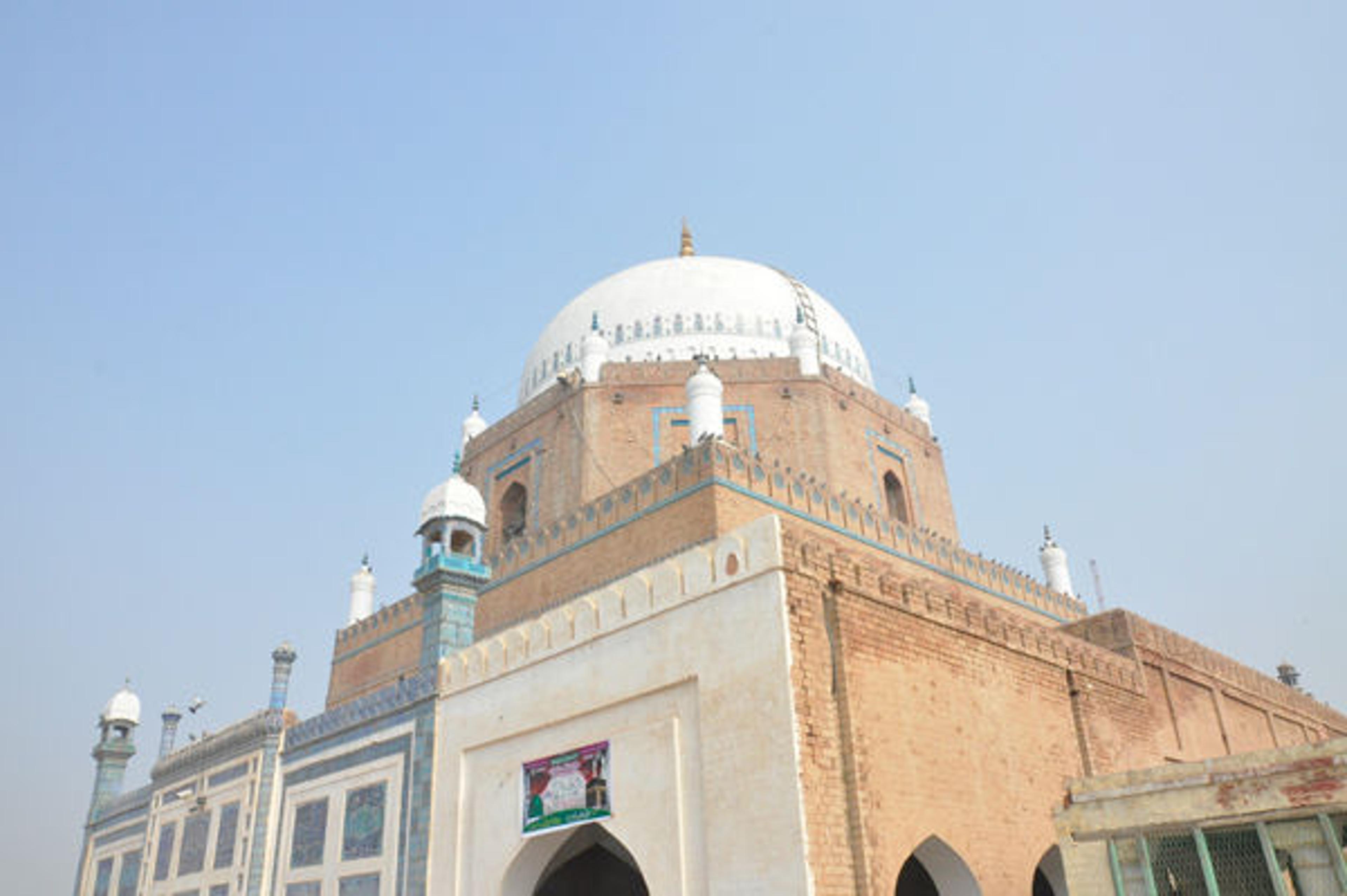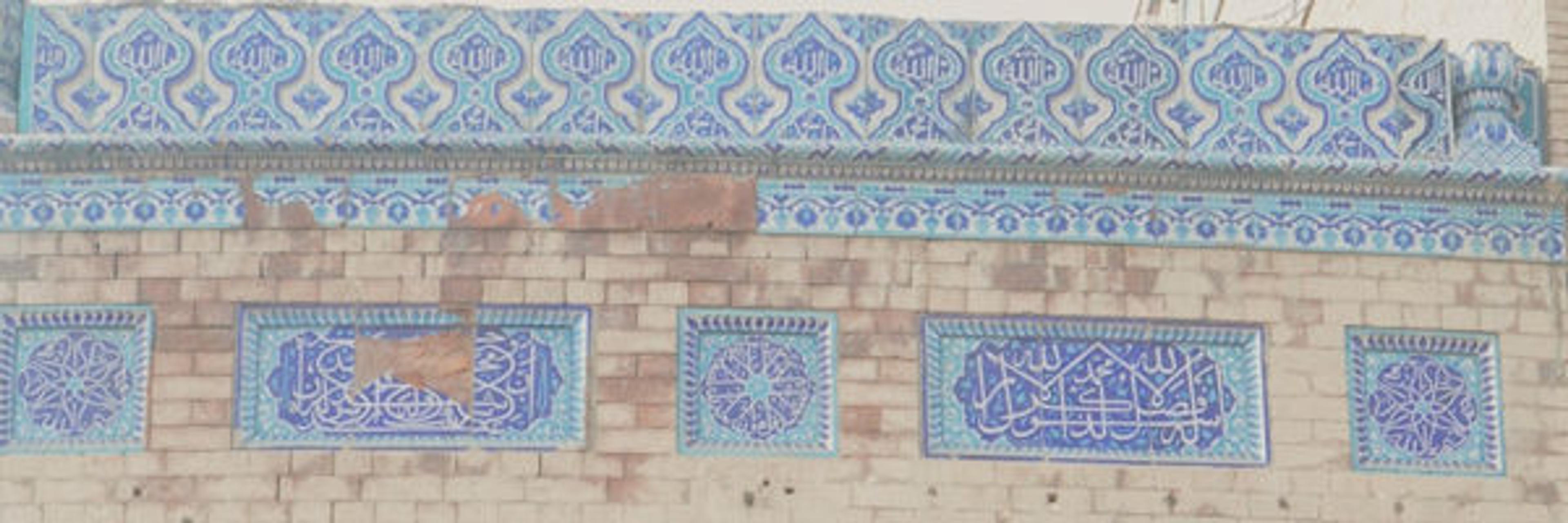
Tile, 18th century. Present-day Pakistan, Multan. Earthenware; molded decoration and glazed; 14 1/2 x 10 1/4 x 2 in. (36.8 x 26 x 5.1 cm). The Metropolitan Museum of Art, New York, Purchase, Friends of Islamic Art Gifts, 2007 (2007.291)
«The Department of Islamic Art has over three thousand ceramic objects in its collection, with perhaps the largest corpus of the collection acquired from the Museum's excavations in Nishapur, Iran, during the mid-twentieth century. While the department maintains a fine collection of Safavid and Ottoman ceramics, ceramic work from south Asia is not as well represented. Among these examples of south Asian ceramics, my favorite is an eighteenth-century tile from Multan, in present-day Pakistan (pictured above). In terms of both material and technique, the tile is typical of ceramics from this part of south Asia, as are three similar objects in the collection—an eighteenth-century dish and two late fifteenth-century tiles (2008.461 and 2008.462).»
The tile from Multan has a molded design that resembles crenellations seen along the upper edges of walls. White glaze was applied over the entire upper surface of the tile before cobalt and turquoise glazes were added in strokes that remain visible in the finished tile. Brushes of two thicknesses were employed; a thick one for broad strokes, such as the cobalt on the cusped arch form; and a thinner instrument for outlines. It is likely that the Metropolitan Museum's tile was originally used in a building facade, perhaps as one of a series of tiles lining a parapet wall. As with most artworks, much can be learned from studying the object within the broader geographical context from which it emerged.
Multan is a city of great historical importance, located at the crossroads of central and south Asia on the Indian subcontinent. Inhabited since antiquity, the city was originally part of the province of Sindh, where it came under Arab rule during the Umayyad period (ca. 712) and was later administered by a series of governors through the Abbasid period. The city was primarily populated by merchants, which is unsurprising given its position on overland trade routes connecting the Islamic world with the subcontinent. Multan was also a site of pilgrimage for Hindus, and the city's sun temple is often mentioned by Arab chroniclers.
Although the initial Arab administration of Multan was tolerant of worship at the sun temple, probably because it was a great source of revenue for the city, this situation was short-lived. As the effects of Kharijite and Isma’ili (two sects within Islam) activity in undermining Abbasid power in Baghdad trickled down to distant parts of the Abbasid Caliphate, Isma’ilis gained a foothold in Sindh. By the late tenth century they controlled Multan, and the city shifted allegiance to the Shi'i Fatimids of Egypt. It was at this time that the sun temple and its famous idol was supposed to have been destroyed.
The Isma’ili period is a crucial turning point in the city's history as it propelled the movement of various Isma’ili saints to converge upon Multan and further laid the foundation for its transformation into a center of Sufi Islamic practice. A number of Sufi saints are buried in and around Multan in spectacular monuments, including the tombs of Baha' al-Din Zakariya (?–1262) and Rukn-i-'Alam (?–1335).

The tomb of Rukn-i-'Alam in Multan. All photographs courtesy of the author
Surviving early Islamic architecture of the Indus Valley—the region around the Indus River—consists primarily of brick structures with cut-brick ornamentation, such as the tomb of Shaikh Sadan Shahid in Muzaffargarh (ca. 1200) and the tombs at Aror, near Sukkur (thirteenth century), which are all reminiscent of the exterior facade of the Samanid mausoleum in Bukhara. A similar group of tombs are found at Lal Mahra Sharif in Dera Ismail Khan, but there we see the use of plaques and bricks glazed in turquoise and engaged tapering turrets, both features also evident in Rukn-i-'Alam. The use of cobalt and turquoise tiles in these Multan buildings immediately draws our thoughts to the architecture of central Asia, such as the turquoise-clad roof of the Mausoleum of Sultan Tekesh, Gurganj, and the tilework facade of the Aq Sarai palace.

Detail of the facade of the mausoleum at the tomb of Rukn-i-'Alam in Multan
In Multan itself, we can also make out the use of molded ceramics in the facades of the tombs, for instance in the faux crenellations at Rukn-i-'Alam (pictured above) and Baha' al-Din Zakariya (pictured below). This technique was also employed in ceramic production in the rest of central Asia and Iran, as can be seen in the star- and hexagonal-tile panel and large jar on display in gallery 455. The small size and portable nature of these objects also provide clues as to how designs and techniques traveled between these regions.

The tomb of Baha' al-Din Zakariya in Multan

Detail of the facade at the tomb of Baha' al-Din Zakariya
Great care should be taken in ascribing these relationships between various buildings and objects; while there are certainly links, they are complicated ones whereby multiple influences can flow in many directions. If we are to look for a good intermediary between central and south Asia, the minaret of Jam, Afghanistan, built in 1174, is a good one. The minaret's complex design—the lower half consisting of an intricate interlaced brick design with the Surah Maryam, chapter 19 of the Qur'an, woven in an ornate fashion, followed by an intermediary band of calligraphy executed in turquoise tiles and topped by further brick ornamentation—provides an interesting comparison to the architecture around Multan. Baha' al-Din Zakariya's restrained use of polychromy recalls the sparing use of turquoise tile at Jam, albeit in a rather different fashion. Turquoise is used to highlight architectural elements in the tomb such as the dome and windows, as opposed to its use as epigraphy in Jam. Nonetheless, this aesthetic similarity suggests the movement of artisans and not just objects.
I see the use of molding as a continuation of the monochrome cut-brick ornament as it employs the same manipulations of surface to create pattern; while the addition of color serves as a further elaboration to this aesthetic. Returning to the tile in the Met's collection, its antecedents in the ceramics of Multan are clear, since most of the monuments in Multan were in continuous use and subject to regular maintenance and restoration.

Detail of the mausoleum facade at the Tomb of Rukn-i-'Alam in Multan